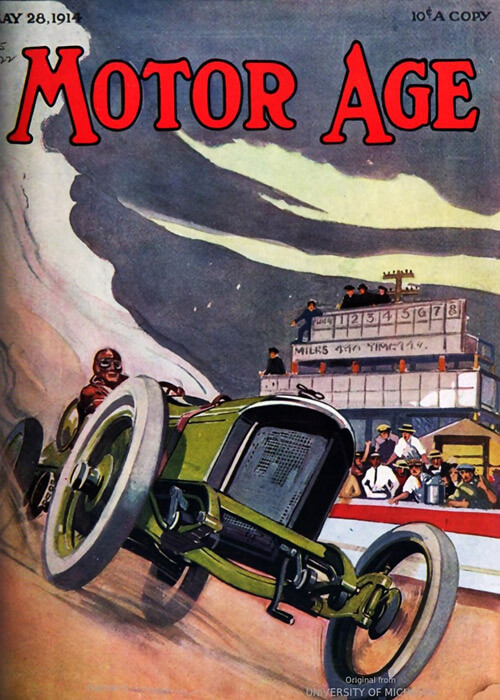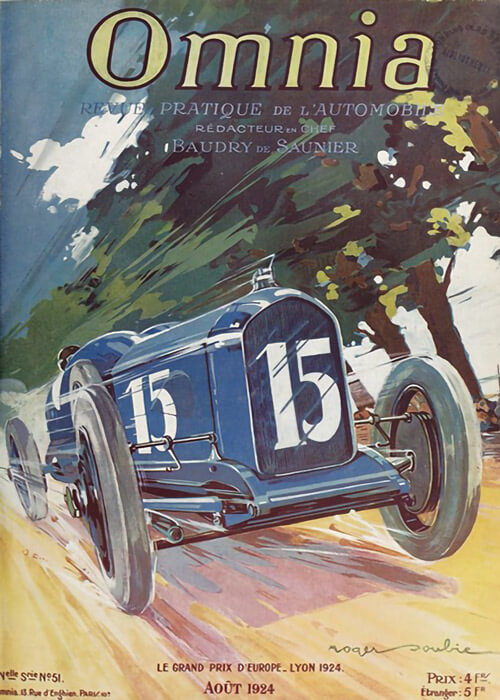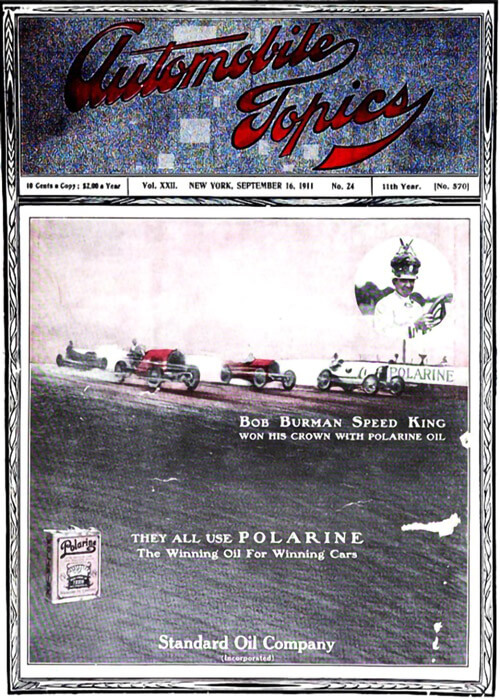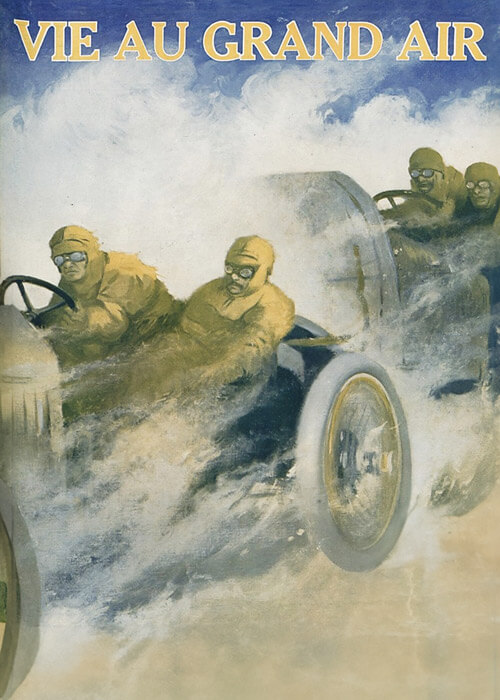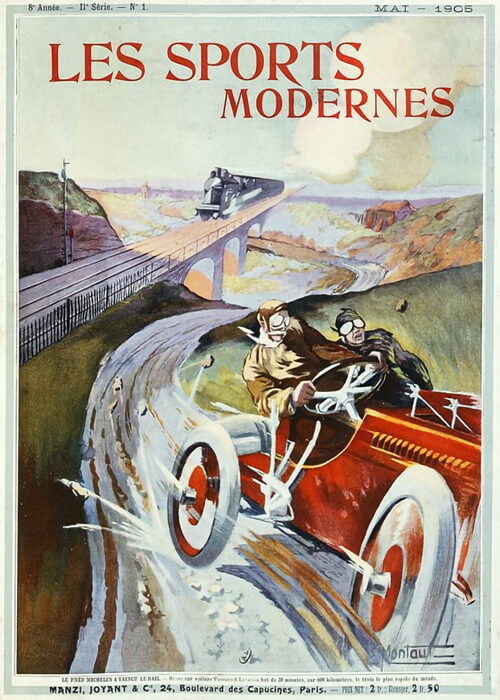The magazine Automobile Topics was known for their very extended reports, combined with ample illustrations; so this one on the first Indianapolis 500-mile race. Very extended and very informative, specially for race interested. I’ve divided the entire article in three sections: part 1 Introduction, part 2 How the Race was Run and part 3 discussing most contestants and race specifics. Nontheless, each of the three parts is a whole lot of information. Here you will find the summarizing third part.
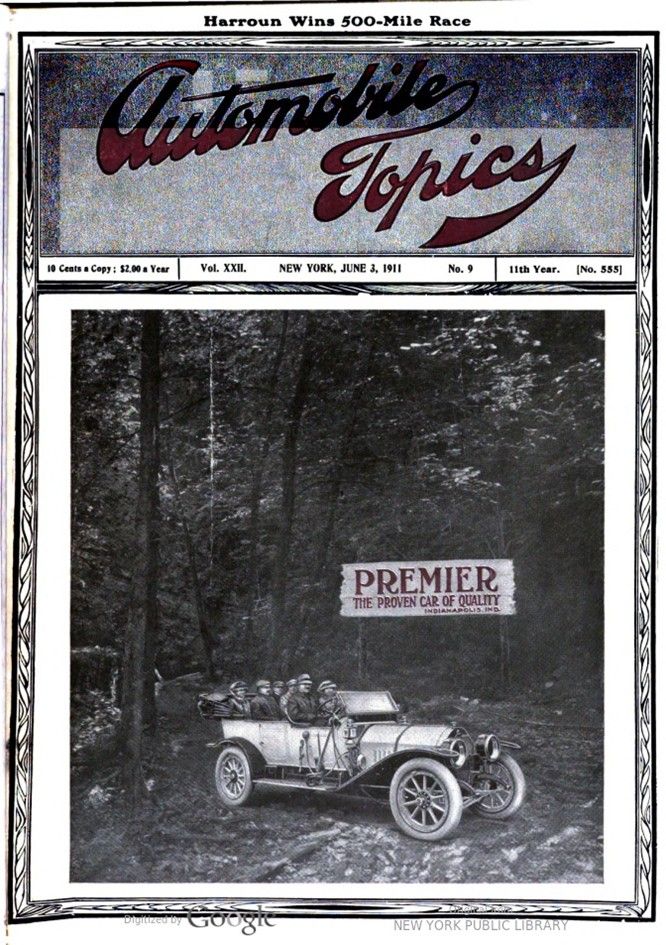
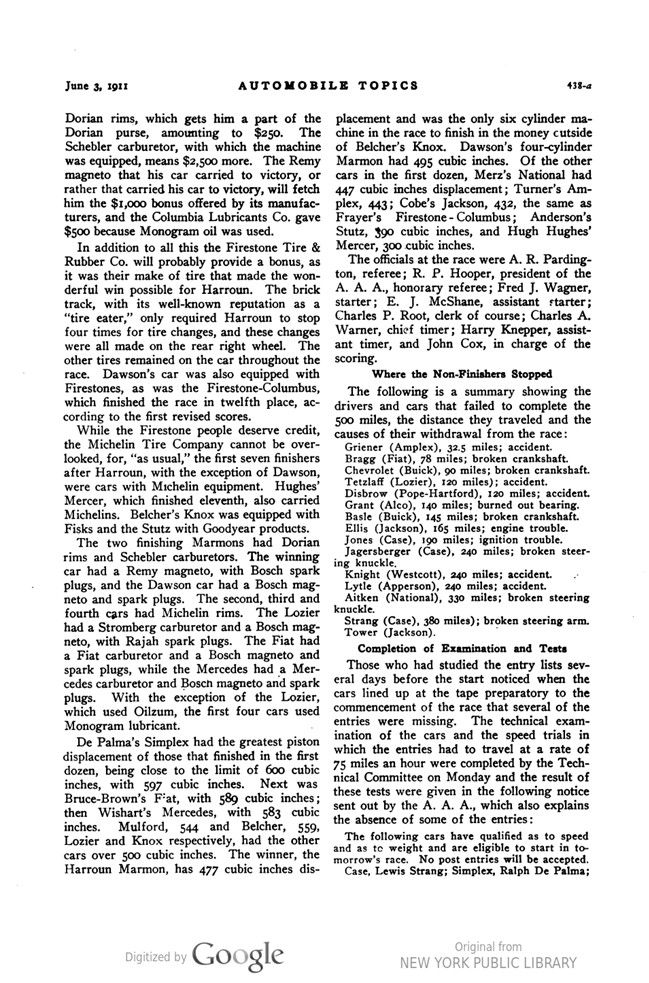
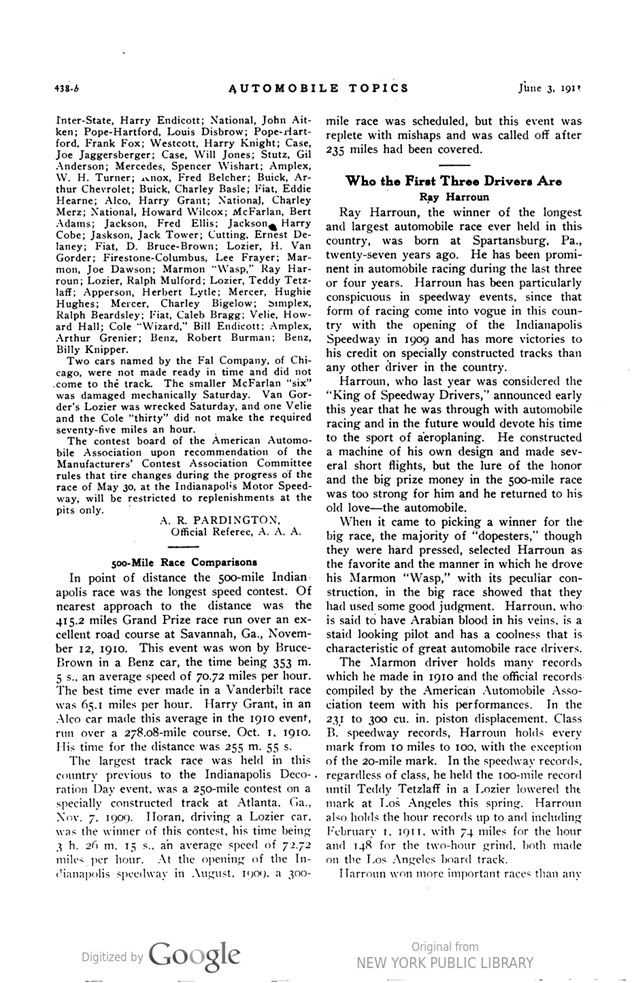
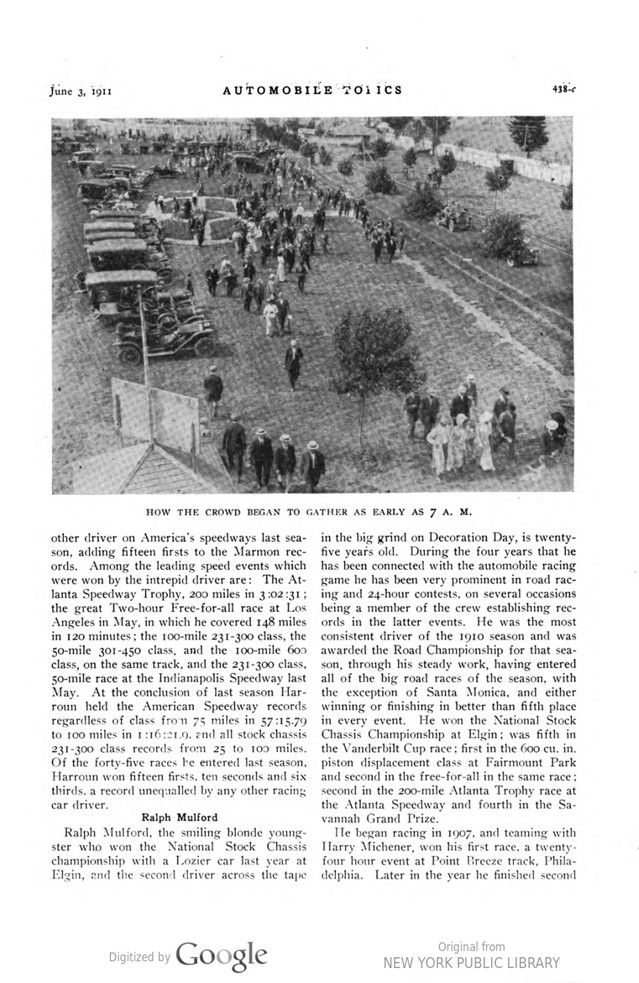
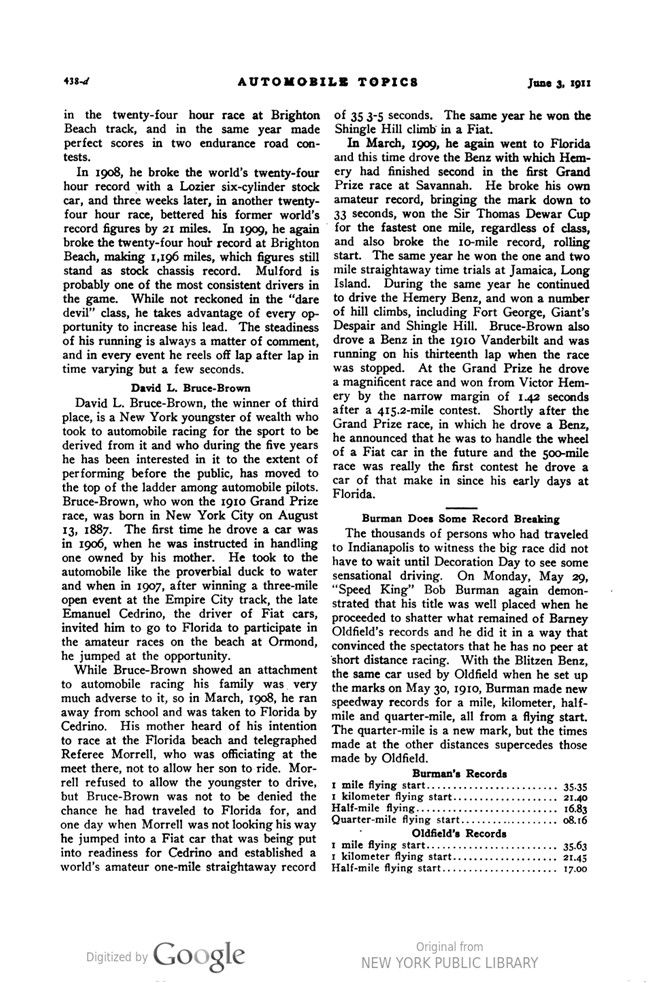
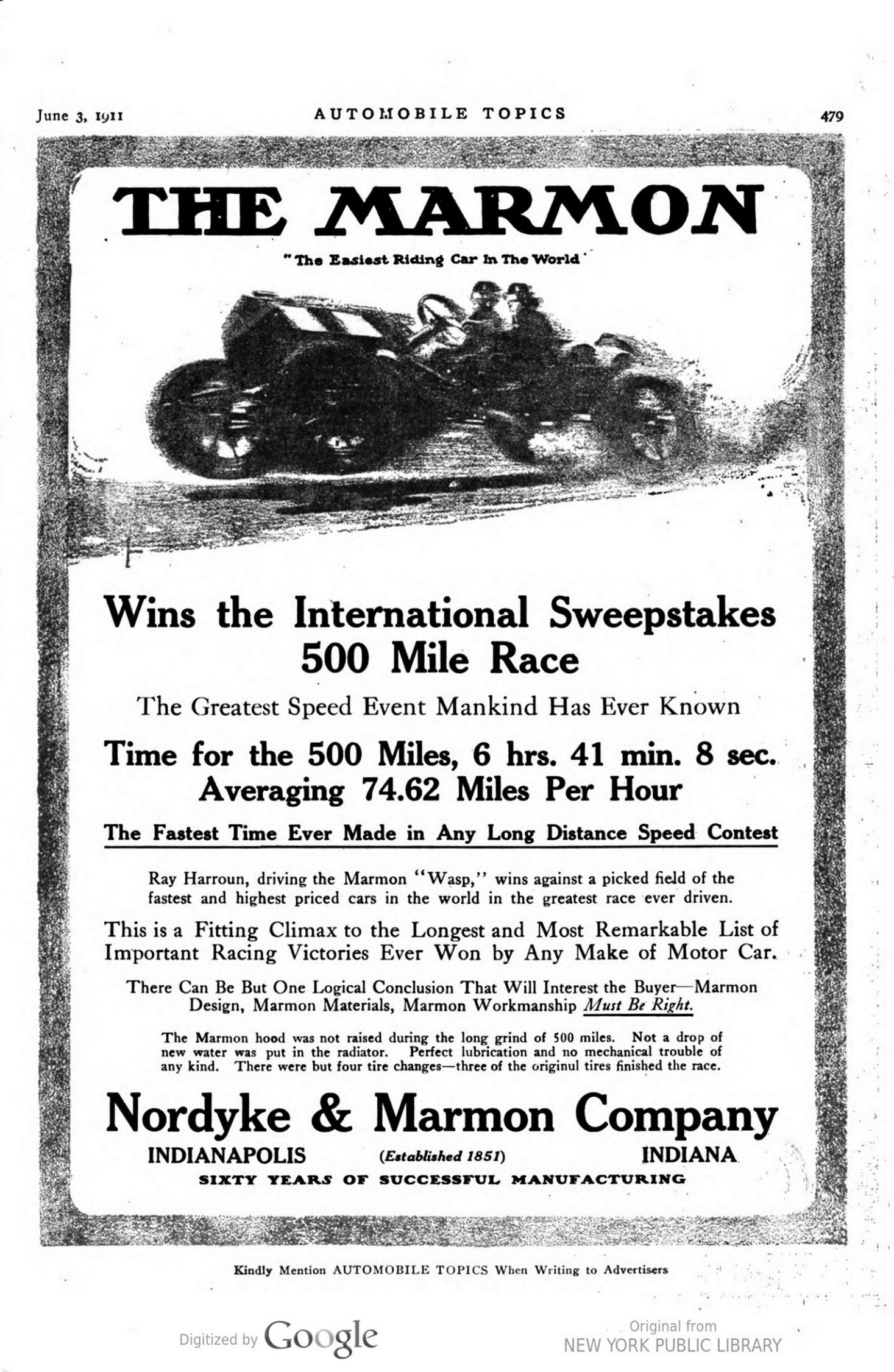
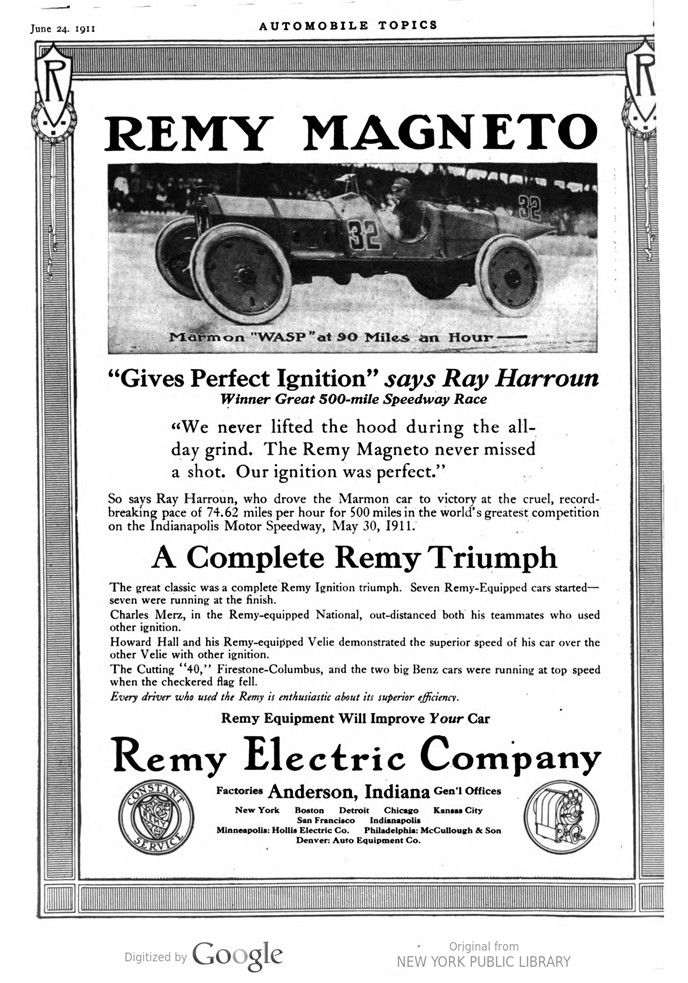
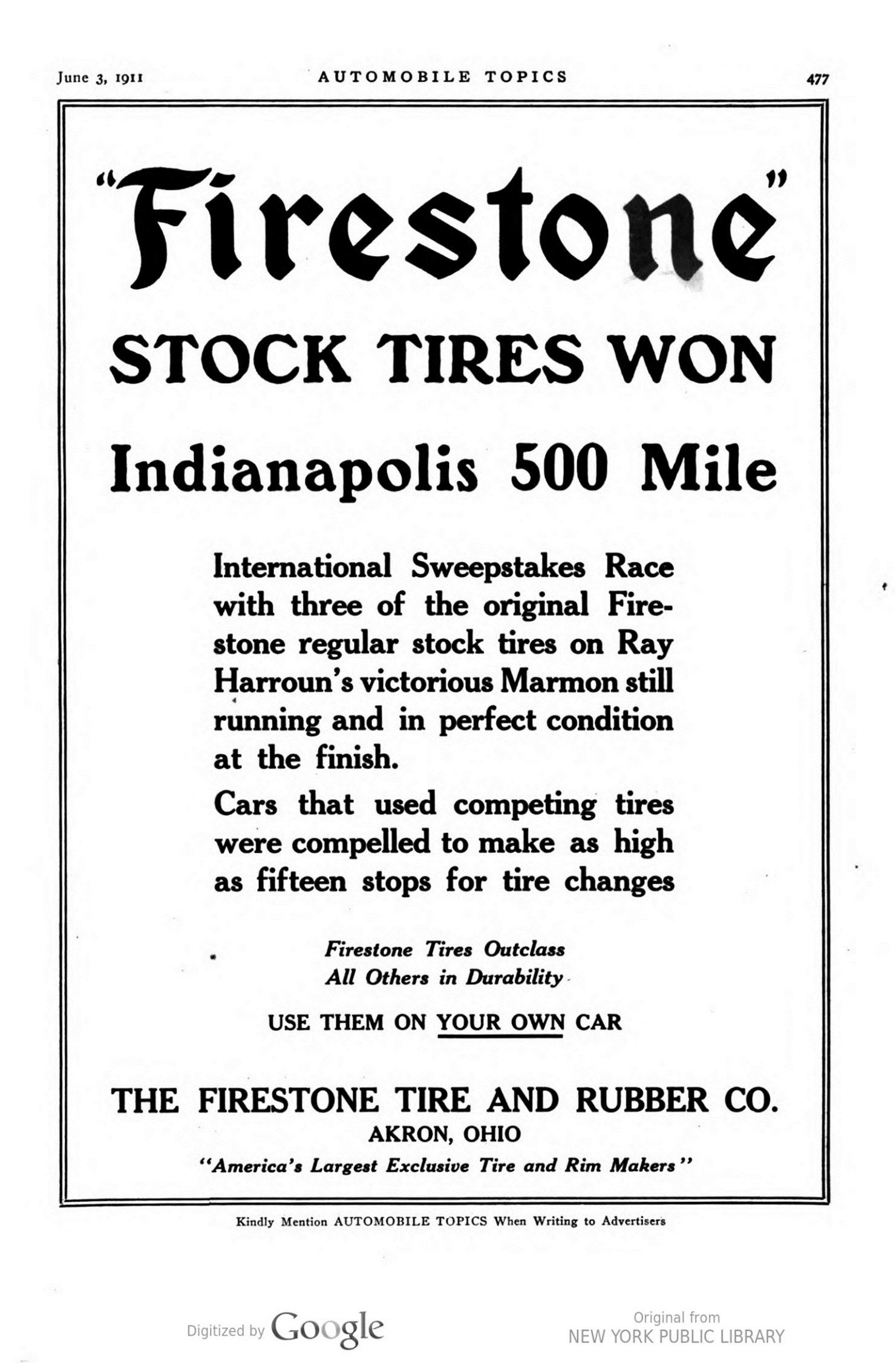
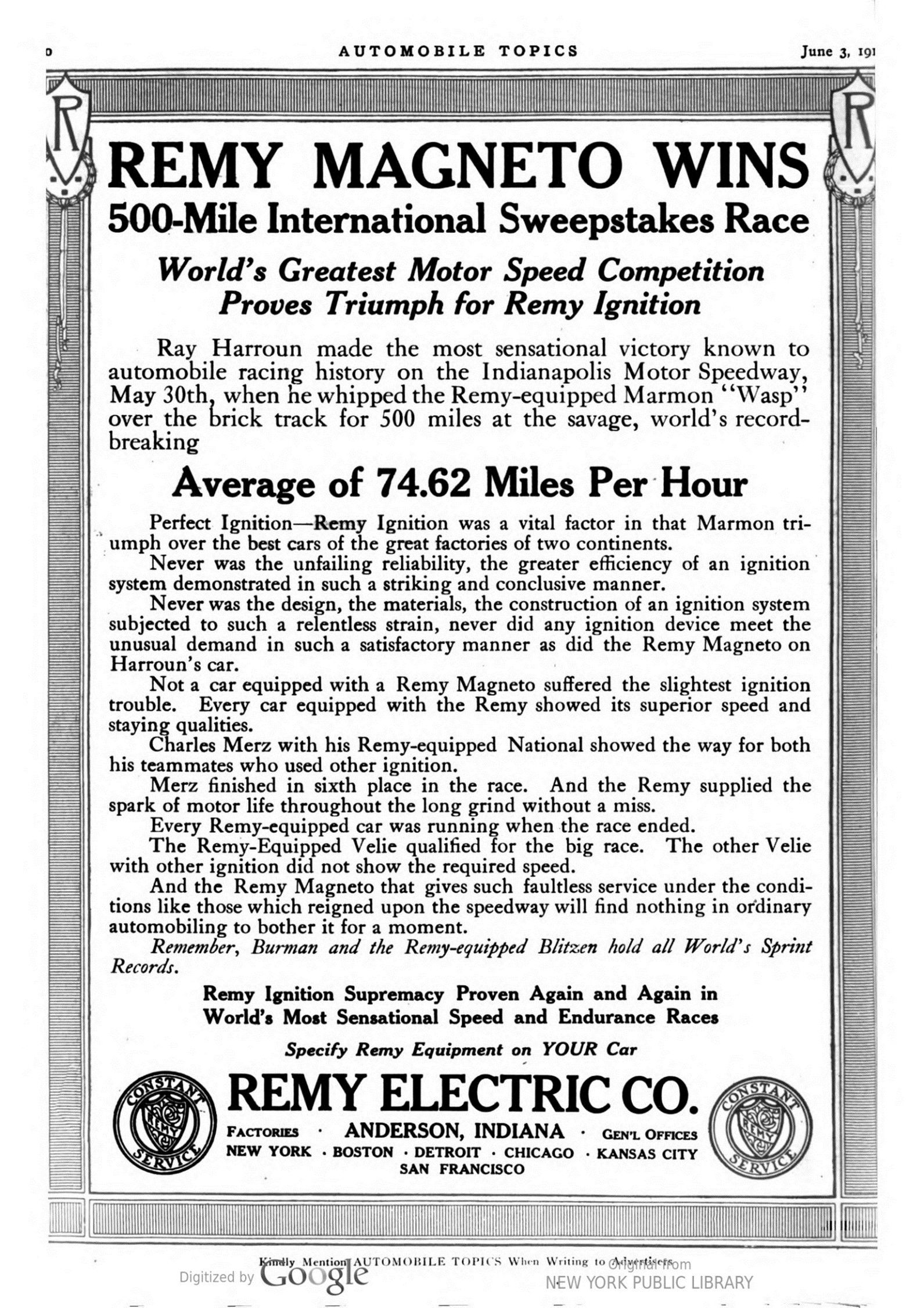
Text and jpegs by courtesy of hathitrust.org www.hathitrust.org, compiled by motorracinghistory.com
AUTOMOBILE TOPICS. Vol. XXII, No. 9, June 3, 1911
Where the Non-Finishers Stopped
The following is a summary showing the drivers and cars that failed to complete the 500 miles, the distance they traveled and the causes of their withdrawal from the race:
Griener (Amplex), 32.5 miles; accident.
Bragg (Fiat), 78 miles; broken crankshaft.
Chevrolet (Buick), 90 miles; broken crankshaft.
Tetzlaff (Lozier), I20 miles); accident.
Disbrow (Pope-Hartford), 120 miles; accident.
Grant (Alco), I40 miles; burned out bearing.
Basle (Buick), 145 miles; broken crankshaft.
Ellis (Jackson), 165 miles; engine trouble.
Jones (Case), 190 miles; ignition trouble.
Jagersberger (Case), 240 miles; broken steering knuckle.
Knight (Westcott), 240 miles; accident.
Lytle (Apperson), 240 miles; accident.
Aitken (National), 330 miles; broken steering knuckle.
Strang (Case), 380 miles); broken steering arm.
Tower (Jackson).
Completion of Examination and Tests
Those who had studied the entry lists several days before the start noticed when the cars lined up at the tape preparatory to the commencement of the race that several of the entries were missing. The technical examination of the cars and the speed trials in which the entries had to travel at a rate of 75 miles an hour were completed by the Technical Committee on Monday and the result of these tests were given in the following notice sent out by the A. A. A., which also explains the absence of some of the entries:
The following cars have qualified as to speed and as to weight and are eligible to start in tomorrow’s race. No post entries will be accepted. Case, Lewis Strang; Simplex, Ralph De Palma; Inter-State, Harry Endicott; National, John Aitken; Pope-Hartford, Louis Disbrow; Pope-Hart ford, Frank Fox; Westcott, Harry Knight; Case, Joe Jagersberger; Case, Will Jones; Stutz, Gil Anderson; Mercedes, Spencer Wishart; Amplex, VV. H. Turner; Knox, Fred Belcher; Buick, Arthur Chevrolet; Buick, Charley Basle; Fiat, Eddie Hearne; Alco, Harry Grant; National, Charley Merz; National, Howard Wilcox; McFarlan, Bert Adams; Jackson, Fred Ellis; Jackson, Harry Cobe; Jaskson, Jack Tower; Cutting, Ernest Delaney; Fiat, D. Bruce-Brown; Lozier, H. Van Gorder; Firestone-Columbus, Lee Frayer; Marmon, Joe Dawson; Marmon „Wasp,“ Ray Harroun; Lozier, Ralph Mulford; Lozier, Teddy Tetzlaff; Apperson, Herbert Lytle; Mercer, Hughie Hughes; Mercer, Charley Bigelow; Simplex, Ralph Beardsley; Fiat, Caleb Bragg; Velie, Howard Hall; Cole „Wizard,“ Bill Endicott: Amplex, Arthur Grenier; Benz, Robert Burman; Benz, Billy Knipper.
Two cars named by the Fal Company, of Chicago, were not made ready in time and did not come to the track. The smaller McFarlan “six” was damaged mechanically Saturday. Van Gorder’s Lozier was wrecked Saturday, and one Velie and the Cole “thirty” did not make the required seventy-five miles an hour.
The contest board of the American Automobile Association upon recommendation of the Manufacturers’ Contest Association Committee rules that tire changes during the progress of the race of May 30, at the Indianapolis Motor Speedway, will be restricted to replenishments at the pits only.
A. R. PARDINGTON, Official Referee, A. A. A.
————–
500-Mile Race Comparisons
In point of distance the 500-mile Indianapolis race was the longest speed contest. Of nearest approach to the distance was the 415.2 miles Grand Prize race run over an excellent road course at Savannah, Ga., November I2, 1910. This event was won by Bruce-Brown in a Benz car, the time being 353 m. 5 s., an average speed of 70.72 miles per hour. The best time ever made in a Vanderbilt race was 65.1 miles per hour. Harry Grant, in an Alco car made this average in the 1910 event, run over a 278.08-mile course. Oct. I, I910. His time for the distance was 255 m. 55 s.
The largest track race was held in this country previous to the Indianapolis Decoration Day event, was a 250-mile contest on a specially constructed track at Atlanta, Ga., Nov. 7, 1909. Horan, driving a Lozier car, was the winner of this contest, his time being 3 h. 26 m. 15 s., an average speed of 712.72 miles per hour. At the opening of the Indianapolis speedway in August, 1909, a 300-mile race was scheduled, but this event was replete with mishaps and was called off after 235 miles had been covered.
————–
Who the First Three Drivers Are
Ray Harroun
Ray Harroun, the winner of the longest and largest automobile race ever held in this country, was born at Spartansburg, Pa., twenty-seven years ago. He has been prominent in automobile racing during the last three or four years. Harroun has been particularly conspicuous in speedway events, since that form of racing come into vogue in this country with the opening of the Indianapolis Speedway in I909 and has more victories to his credit on specially constructed tracks than any other driver in the country.
Harroun, who last year was considered the “King of Speedway Drivers,“ announced early this year that he was through with automobile racing and in the future would devote his time to the sport of aeroplaning. He constructed a machine of his own design and made several short flights, but the lure of the honor and the big prize money in the 500-mile race was too strong for him and he returned to his old love — the automobile.
When it came to picking a winner for the big race, the majority of “dopesters,” though they were hard pressed, selected Harroun as the favorite and the manner in which he drove» his Marmon “Wasp,” with its peculiar construction, in the big race showed that they had used some good judgment. Harroun. who – is said to have Arabian blood in his veins. is a staid looking pilot and has a coolness that is – characteristic of great automobile race drivers.
The Marmon driver holds many records which he made in 1910 and the official records, compiled by the American Automobile Association teem with his performances. In the 231 to 300 cu. in. piston displacement, Class B. speedway records, Harroun holds every mark from I0 miles to I00, with the exception of the 20-mile mark. In the speedway records, regardless of class, he held the 100-mile record until Teddy Tetzlaff in a Lozier lowered the mark at Los Angeles this spring. Harroun also holds the hour records up to and including February 1, 1911, with 74 miles for the hour and I48 for the two-hour grind, both made on the Los Angeles board track.
Harroun won more important races than any other driver on Americas speedways last season, adding fifteen firsts to the Marmon records. Among the leading speed events which were won by the intrepid driver are: The Atlanta Speedway Trophy, 200 miles in 3:02:31; the great Two-hour Free-for-all race at Los Angeles in May, in which he covered 148 miles in 120 minutes; the 100-mile 231-300 class, the 50-mile 301-450 class. and the 100-mile 600 class, on the same track, and the 231-300 class, 50-mile race at the Indianapolis Speedway last May. At the conclusion of last season Harroun held the American Speedway records regardless of class from 75 miles in 57:15.79 to 100 miles in 1:16:21.9 and all stock chassis 231-300 class records from 25 to 100 miles. Of the forty-five races he entered last season, Harroun won fifteen firsts, ten seconds and six thirds, a record unequalled by any other racing car driver.
Ralph Mulford
Ralph Mulford, the smiling blonde youngster who won the National Stock Chassis championship with a Lozier car last year at Elgin, and the second driver across the tape in the big grind on Decoration Day, is twenty-five years old. During the four years that he has been connected with the automobile racing game he has been very prominent in road racing and 24-hour contests. on several occasions being a member of the crew establishing records in the latter events. He was the most consistent driver of the 1910 season and was awarded the Road Championship for that season, through his steady work, having entered all of the big road races of the season, with the exception of Santa Monica, and either winning or finishing in better than fifth place in every event. He won the National Stock Chassis Championship at Elgin; was fifth in the Vanderbilt Cup race; first in the 600 cu. in. piston displacement class at Fairmount Park and second in the free-for-all in the same race; second in the 200-mile Atlanta Trophy race at the Atlanta Speedway and fourth in the Sa- vannah Grand Prize.
He began racing in 1907 and teaming with Harry Michener, won his first race, a twenty-four hour event at Point Breeze track, Philadelphia. Later in the year he finished second in the twenty-four hour race at Brighton Beach track, and in the same year made perfect scores in two endurance road contests.
In 1908, he broke the world’s twenty-four hour record with a Lozier six-cylinder stock car, and three weeks later, in another twenty-four hour race, bettered his former world’s record figures by 21 miles. In 1909, he again broke the twenty-four hour record at Brighton Beach, making 1,196 miles, which figures still stand as stock chassis record. Mulford is probably one of the most consistent drivers in the game. While not reckoned in the “dare devil” class, he takes advantage of every opportunity to increase his lead. The steadiness of his running is always a matter of comment, and in every event, he reels off lap after lap in time varying but a few seconds.
David L. Bruce-Brown
L. Bruce-Brown, the winner of third place, is a New York youngster of wealth who took to automobile racing for the sport to be derived from it and who during the five years he has been interested in it to the extent of performing before the public, has moved to the top of the ladder among automobile pilots. Bruce-Brown, who won the 1910 Grand Prize race, was born in New York City on August 13, 1887. The first time he drove a car was in 1906, when he was instructed in handling one owned by his mother. He took to the automobile like the proverbial duck to water and when in 1907, after winning a three-mile open event at the Empire City track, the late Emanuel Cedrino, the driver of Fiat cars, invited him to go to Florida to participate in the amateur races on the beach at Ormond, he jumped at the opportunity.
While Bruce-Brown showed an attachment to automobile racing his family was, very much adverse to it, so in March, 1908, he ran away from school and was taken to Florida by Cedrino. His mother heard of his intention to race at the Florida beach and telegraphed Referee Morrell, who was officiating at the meet there, not to allow her son to ride. Morrell refused to allow the youngster to drive, but Bruce-Brown was not to be denied the chance he had traveled to Florida for, and one day when Morrell was not looking his way he jumped into a Fiat car that was being put into readiness for Cedrino and established a world’s amateur one-mile straightaway record of 35 3-5 seconds. The same year he won the Shingle Hill climb in a Fiat. In March 1909, he again went to Florida and this time drove the Benz with which Hemery had finished second in the first Grand Prize race at Savannah. He broke his own amateur record, bringing the mark down to 3 3 seconds, won the Sir Thomas Dewar Cup for the fastest one mile, regardless of class, and also broke the 1o-mile record, rolling start. The same year he won the one and two mile straightaway time trials at Jamaica, Long Island. During the same year he continued to drive the Hemery Benz, and won a number of hill climbs, including Fort George, Giant’s Despair and Shingle Hill. Bruce-Brown also drove a Benz in the 1910 Vanderbilt and was running on his thirteenth lap when the race was stopped. At the Grand Prize he drove a magnificent race and won from Victor Hemery by the narrow margin of 1.42 seconds after a 415.2-mile contest. Shortly after the Grand Prize race, in which he drove a Benz, he announced that he was to handle the wheel of a Fiat car in the future and the 500-mile race was really the first contest he drove a car of that make in since his early days at Florida.
Burman Does Some Record Breaking
The thousands of persons who had traveled to Indianapolis to witness the big race did not have to wait until Decoration Day to see some sensational driving. On Monday, May 29, “Speed King” Bob Burman again demonstrated that his title was well placed when he proceeded to shatter what remained of Barney Oldfield’s records and he did it in a way that convinced the spectators that he has no peer at short distance racing. With the Blitzen Benz, the same car used by Oldfield when he set up the marks on May 30, 1910, Burman made new speedway records for a mile, kilometer, half-mile and quarter-mile, all from a flying start. The quarter-mile is a new mark, but the times made at the other distances supercedes those made by Oldfield.
Burman’s Records
1 mile flying start . . . . . . . . . . . . . . . . . . . . . .. 35.35
1 kilometer flying start . . . . . . . . . . . . . . . . . . . 21.40
Half-mile flying . . . . . . . . . . . . . . . . . . . . . . . .. 16.83
Quarter-mile flying start . . . . . . . . . . . . . . . . . .. 08.16
Oldfield’s Records
1 mile flying start . . . . . . . . . . . . . . . . . . . . . . 35.63
I kilometer flying start . . . . . . . . . . . . . . . . . . . 21.45
Half-mile flying start . . . . . . . . . . . . . . . . . . . . 17.00
